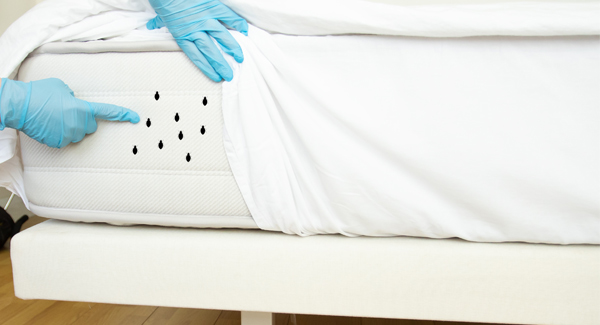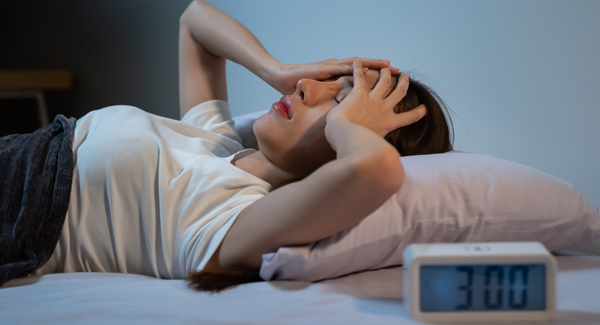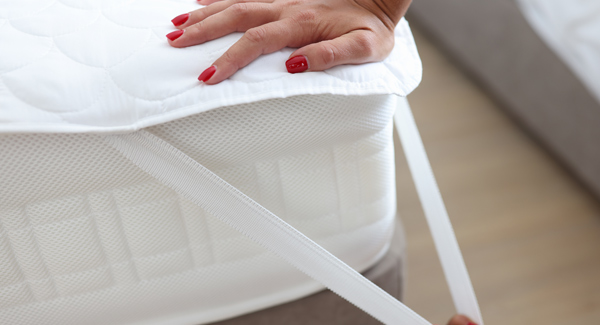Home » Bedding advice » Do Mattress Protectors Prevent Bed Bugs?
Do mattress protectors prevent bed bugs?
Article navigation
- Published:
- Written by: Tony Brown
- Topic: Bedding advice
Bed bugs are tiny reddish-brown insects that often live on furniture and bedding. They can enter your home through luggage, clothing, bags, or second-hand furniture. Bed bugs are active at night and bite uncovered skin, like your face, neck, and hands, during sleep.
While some people may not react to their bites, others may experience itching, soreness, or swelling. Allergic reactions are also possible but are rare. However, bed bugs are not considered dangerous.
Dealing with a bed bug infestation can be quite unpleasant and may cause anxiety and insomnia. A mattress cover protects your mattress from stains and spillages, maintaining a clean and hygienic sleeping surface. A fully encased mattress protector covers the entire mattress and can prevent bed bugs from getting in and out of your bed, where they typically establish themselves. It effectively prevents new bed bugs from getting into your mattress and traps any bed bugs already inside it.
However, bed bugs are highly adaptable creatures that can easily travel from one place to another. A fully encased mattress protector can help contain a bed bug infestation. However, it won’t prevent them from entering your home. Fortunately, you can take other preventative measures to reduce the risk of bed bugs.
Can bed bugs get through a mattress protector?
Some mattress protectors are more effective at preventing bed bugs than others. Regular mattress protectors attach to the mattress like a fitted sheet, with an elasticated skirt or straps that stretch over the corners of the mattress. They protect the sleeping surface from stains and spillages. However, they do not fully cover the sides and expose the underside, allowing tiny bed bugs to pass through small gaps.
An encasement-style mattress protector covers the entire mattress, including the underside. They typically feature a zipper closure that securely seals the mattress inside the encasement.
Encasement mattress protectors seal the mattress, making it challenging for bed bugs to penetrate or escape it. Since they cannot feed, they will eventually die.
Mattress protectors made from smoother materials make it difficult for bed bugs to climb and grip onto.
However, encasement protectors may not be completely impenetrable. Bed bugs are highly adaptable and can often navigate through small gaps, such as zipper teeth or rips and tears in the material, especially when trying to survive.
How to choose a mattress protector for bed bugs
Some mattress encasements are more effective than others at reducing the risk of bed bugs. Here’s what you need to consider:
Snug fit
Choose an encasement that fits tightly and fully covers the mattress, leaving no gaps for bed bugs to exploit.
Durable materials
Choose a high-quality mattress protector made from durable materials that are less prone to ripping or tearing. The material should be thick enough to prevent bed bugs from biting or escaping through it. A thin or easily penetrable material would allow bed bugs to feed through it.
Ensure the mattress encasement features a secure zipper closure that closes tightly without gaps. Zippers with small teeth are less likely to allow bed bugs through.
Higher-quality mattress protectors may be double-stitched to reinforce the seams and prevent them from fraying.
Zipper flap
Some encasements have a flap behind the zipper to prevent bed bugs from entering or escaping through the zipper’s teeth or gaps.
Avoid chemically treated mattress protectors
Some mattress protectors are chemically treated to repel bed bugs. However, little evidence suggests they effectively kill or eliminate infestations. These chemicals can also pose health risks, so it’s best to avoid them. Instead, choose ‘chemical-free’ or ‘non-toxic’ mattress protectors made from natural materials such as cotton, silk, or bamboo.
Certification
Choose mattress encasements that are independently tested and certified to be effective against bed bugs. Look for certifications from reputable organisations, like the Entomological Society of America (ESA), the American Academy of Entomological Sciences (AAES), or the Asthma and Allergy Foundation of America (AAFA). These certifications indicate that the mattress protector has undergone rigorous testing to ensure it meets the standards for bed bug protection.
Be wary of inexpensive models described as ‘bed bug proof,’ as they may deteriorate quickly and be ineffective against bed bugs.
Breathability
Breathable materials, such as cotton, wool, and bamboo, absorb moisture and allow air to flow freely through the material. While breathability may not directly impact bed bugs, it ensures a cool and comfortable sleep environment.
Regularly inspect your mattress protector
Regularly check your mattress protector for signs of wear and tear, as bed bugs can exploit even the smallest gaps or holes. Replace it if necessary.
Follow the manufacturer’s care instructions
Always follow the manufacturer’s care instructions to ensure your mattress protector performs as expected and remains in good condition.
How to check your bed for bed bugs
Bed bugs are highly adaptable insects that can be difficult to spot. They can hide in many places when they are not feeding. If you think you have bed bugs, it’s important to check your bed and bedroom furniture thoroughly.
Small, itchy, clustered bites on your skin, especially on your face, neck, shoulders and arms, could be a sign of bed bugs. However, some people may not experience any marks or itching from bed bugs.
Other signs of bed bugs to look for include:
- Blood spots on your bedding or mattress.
- Tiny pale yellow eggs or eggshells.
- Bedbug excrement, appearing as black dots about the size of a period.
- Shed skin from bedbugs, resembling the insects themselves.
- Small eggs and eggshells.
- A sweet, musty smell in your bedroom.
Bed bugs often hide in dark places, so it helps to use a torch and a magnifying glass to help you spot them.
Start by thoroughly checking your bed base and headboard. Examine all parts, including screw holes, cracks and crevices. Then, inspect the mattress. Check the seams, tufts, and piping, as these are areas where bed bugs like to hide. Flip the mattress and also check the underside.
Thoroughly inspect the rest of the bedroom for bed bugs. Check your bedroom furniture, paying close attention to seams, corners, and crevices where bed bugs are likely to hide. Inspect behind mirrors and pictures, underneath rugs, lamps, and other accessories. Also, check around electrical sockets. Finally, check your curtains for bed bugs, particularly around the folds or seams.
If you find evidence of bed bugs, consider contacting a professional pest control service.
How to prevent bed bugs in your bedroom
Bed bugs can easily enter your home and can be difficult to eliminate once they establish themselves inside. Fortunately, you can take preventative measures to help protect yourself from a bed bug infestation.
- Regularly inspect your bed and bedroom, particularly if you travel or have recently acquired second-hand furniture, to help minimise the risk of a bed bug infestation.
- Keep your bedroom tidy and clutter-free to reduce hiding spots for bed bugs. Move your bed away from the wall and ensure your bedding does not touch the floor.
- Regularly washing your mattress protector and bedding at high temperatures can effectively kill bed bugs and their eggs.
- Periodically vacuum or gently brush your mattress to remove dust and debris. Open windows and doors to allow good ventilation.
- Repair any cracks and crevices in your bedroom to eliminate potential hiding places for bed bugs.
- Avoid purchasing or acquiring used mattresses, especially from people you don’t know. They may be unsafe, unhygienic, or infested with bed bugs.
- After travelling, thoroughly inspect your luggage for bed bugs, paying close attention to seams, pockets, and straps. If needed, unpack your luggage in the bathroom and shake out clothing over the bath or shower to make it easier to spot bed bugs against light surfaces.
Final thoughts
While a fully encased mattress protector provides some protection against bed bugs, it won’t eradicate them completely. Therefore, using a mattress protector with other preventive measures can reduce the risk of bed bugs in your home.
A mattress protector offers more than just bed bug protection. Your bed accumulates dirt, sweat, moisture, dead skin, body oils, and debris each night, creating the ideal conditions for mould, mildew, and dust mites. A mattress protector keeps your mattress clean, comfortable, and in good condition.
Share this article

About the author
Tony Brown is the founder and creator of The Bed Consultant. His career in the bed industry began in 2002. After graduating from university with a degree in Business Administration, Tony joined one of the largest independent furniture retailers in the UK as a bed consultant. Tony has helped thousands of customers find the perfect mattress.



